Step into the lush landscapes of Louisiana, where agriculture is the backbone of the community. This state is teeming with a variety of crops, from towering sugarcane to sprawling rice fields. This article focuses on the top crops that add serious value to Louisiana’s economy and fill our dinner plates with Southern goodness.
If you’re keen on local foods or interested in the business of farming, this list offers a peek into the agricultural gems that make Louisiana so special. So, are you ready to explore the bounty that makes the Pelican State a key player in America’s farming industry? Let’s get into it.
Disclaimer: The information in this article is based on data provided by the United States Department of Agriculture’s National Agricultural Statistics Service (USDA/NASS). All figures are accurate for the year 2021/2022. Readers should refer to the USDA/NASS for the most up-to-date information.
Louisiana’s Most Valuable Crops at a Glance
- In 2022, the total value of Louisiana’s field crops reached close to $3 billion, marking a 13% jump from 2021.
- Soybeans, corn, and rice were the big players, contributing to nearly 60% of the overall crop value.
- Cotton seed was the star performer, soaring in value by an incredible 163% compared to the previous year.
- Cotton also did well, increasing its value by 68% from last year.
- Corn was the only major crop to lose value, experiencing a 10% drop compared to 2021.
1. Sugarcane – $928,118,000 (Estimated)
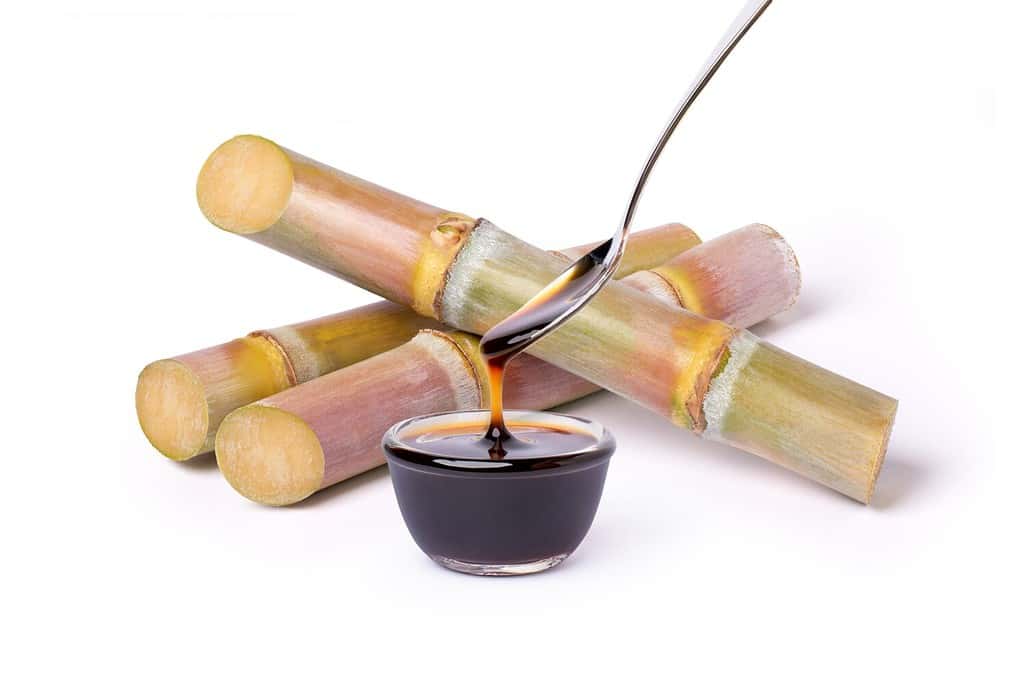
The most valuable crop in Louisiana is sugarcane. Although figures for 2022 aren’t out yet, if previous years are any indication, the figures are estimated to be around $900 million.
©NIKCOA/Shutterstock.com
Unfortunately, there is no exact figure for the production value of sugarcane in 2022. However, in 2021, sugarcane led the pack as the most valuable crop in Louisiana, bringing in $758,205,000. Sugarcane, a plant that typically thrives in tropical conditions, has managed to adapt to Louisiana’s milder climate. The successful cultivation and high sugar output in the state is primarily due to specialized breeding programs that started back in the early 20th century.
Commonly a tall, perennial grass, sugarcane is grown for its sugar content. These plants reach heights of 6 to 20 feet and have thick, segmented stems filled with sucrose, particularly between the joints.
In the U.S., Florida leads in sugarcane production, with Louisiana and Texas trailing behind.
Sugarcane holds a significant spot in Louisiana’s agriculture. The state has over half a million acres devoted to sugarcane farming and houses 11 production facilities. These factories turn nearly 16 million tons of the harvested crop into around 1.9 million tons of unrefined sugar and over 91 million gallons of molasses each year.
The amount of land dedicated to sugarcane farming has been on the rise for the past decade, particularly in specific regions of Louisiana. Vermilion Parish has seen significant growth, along with the northern cane belt areas such as Pointe Coupee, Avoyelles, and Rapides parishes.
Official financial figures for 2022 are yet to be disclosed. However, in recent years, the sugarcane crop’s average worth has been about 30% of the total production figures. Taking this into consideration, the estimated value of the sugarcane harvest of 2022 is roughly $900 million.
The harvested land for sugarcane saw a slight increase, going up by 1% from last year to 497,800 acres. The yield per acre also improved, jumping to 33.4 net tons — an increase of 4.1 net tons compared to 2021. All in all, the state produced a whopping 16.6 million net tons of sugarcane in 2022, marking a 15% rise from 2021.
2. Soybeans – $773,432,000
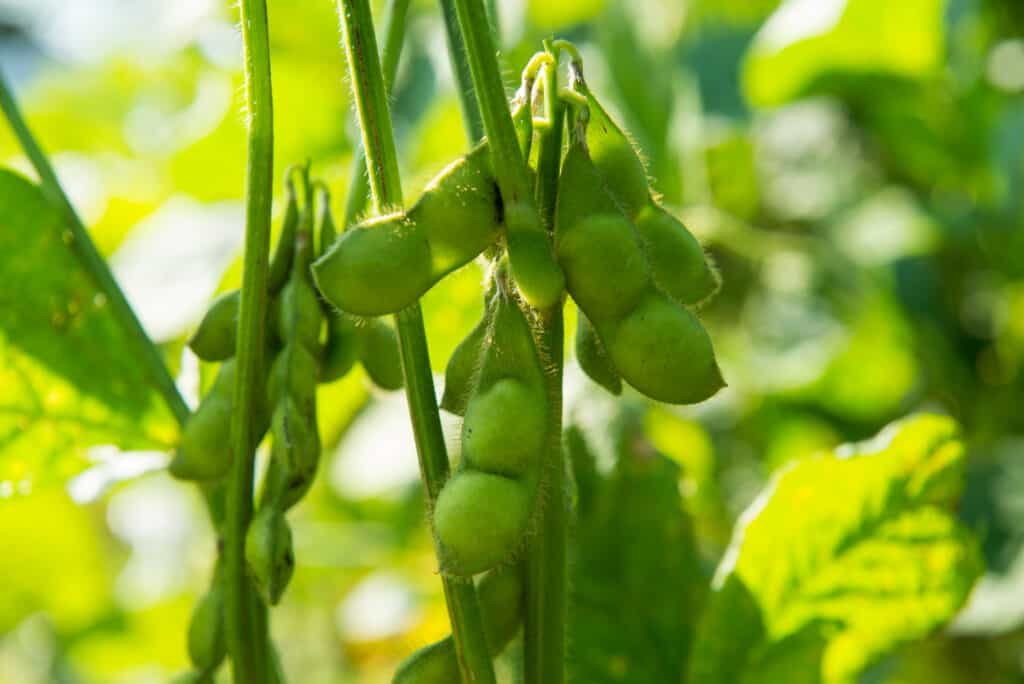
Soybeans are the second-most valuable crop in Louisiana, bringing in almost $800 million in 2022.
©pro ust/Shutterstock.com
Before the 1960s, Louisiana had only a small amount of land used for growing soybeans. Nowadays, you’ll find most soybean farms in the fertile regions near rivers in northeast and central Louisiana.
Soybeans belong to the legume family, making them cousins to peas and alfalfa. They start their life with two small leaves, known as dicots. Each mature soybean plant can have between 60 and 80 pods, and each pod usually contains three little beans.
During the agricultural surge in the ’60s and ’70s, Louisiana saw a big jump in soybean fields. The land set aside for this crop rocketed from nearly 100,000 acres to a massive 2 million. Nowadays, the state keeps about 1.1 million acres of land for soybeans, and it’s handled by a strong community of over 2,200 farmers.
The size of soybean fields in Louisiana kept growing, with a 14% uptick in land from 2021, reaching 1.21 million acres in 2022. But it’s not all good news: each acre produced a little less than before, yielding 47 bushels, down by 5 bushels from last year. Even so, the overall harvest still went up a bit — by 3%, resulting in 56.9 million bushels.
When it comes to monetary figures, the 2022 soybean harvest in Louisiana gained in value, hitting $773.4 million, an increase from $683.5 million in 2021.
3. Corn – $491,768,000
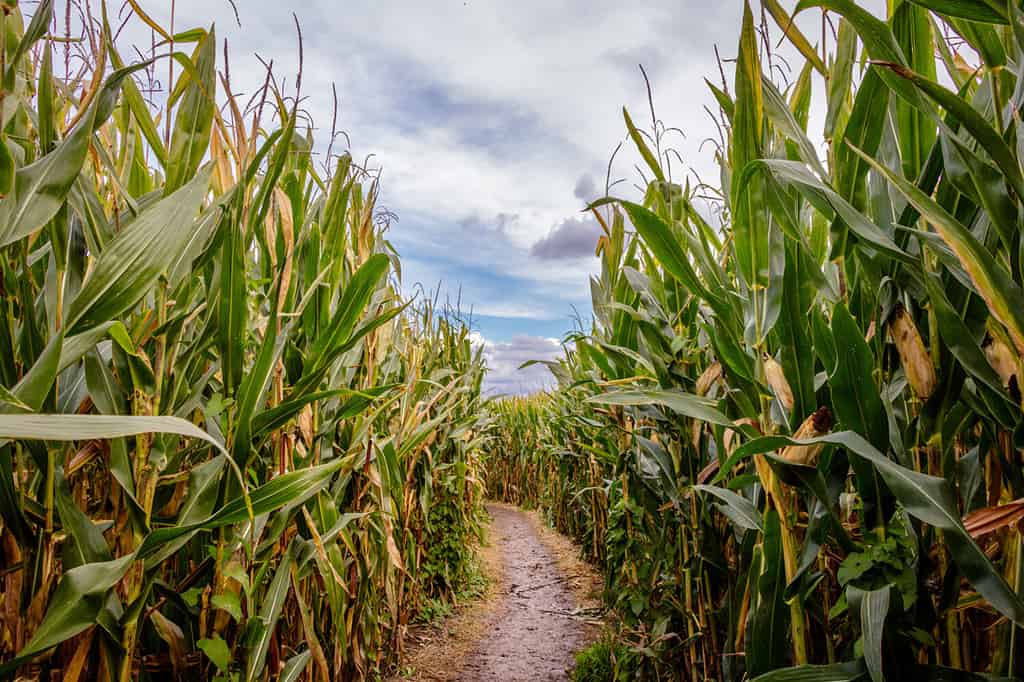
With a production of almost $500 million in 2022, corn is the third most valuable crop in Louisiana.
©Dennis Wegewijs/Shutterstock.com
Corn also holds a significant place in Louisiana’s agricultural scene, with the northeastern region of the state being a key production area. Looking at the yields, the northern, central, and southern regions produce 147, 139, and 172 bushels per acre, respectively.
This staple crop is a type of tall grass that develops large ears filled with seeds, commonly known as kernels. These kernels serve multiple purposes: they’re edible for both humans and animals, can be converted into biofuel, and are used to make an array of industrial chemicals.
Unfortunately, there’s been a downturn in Louisiana’s corn production. The harvested land for corn farming shrank to 435,000 acres, marking a 23% decrease compared to 2021. The average yield per acre also fell to 170 bushels, which is 13 bushels less than last year. Overall, the state produced 74 million bushels, a drop of 28% from 2021.
In terms of revenue, corn generated about $492 million in 2022.
4. Rice – $472,798,000

As the fourth most valuable crop in Louisiana, rice has a long history in the state.
©R.M. Nunes/Shutterstock.com
Louisiana ranks among the top three states in the U.S. for rice production, focusing mainly on long-grain varieties. The southwest region is the hub for rice farming, but the northeast also contributes, especially in Bolivar and Tunica Counties.
Rice is a key food source all around the world. It’s a type of grass that grows best in watery conditions. There are about 20 different kinds of rice plants under the Oryza genus.
The state’s warm weather, water-rich environment, and clayey soil make it ideal for rice cultivation. The biggest rice producers in Louisiana are the Jefferson Davis and Acadia parishes, as reported by the USDA.
Rice farming in Louisiana has a long history, dating back to 1718, when it was brought over by French explorers. However, it was the arrival of railroads and advancements by Dr. Seaman A. Knapp in the 1800s that really kick-started the industry.
In terms of national rankings, Louisiana trailed only Arkansas in rice production in 2022.
Looking at recent stats, the state had a slight increase in rice acreage in 2022, with 415,000 acres harvested. However, the yield per acre did drop a bit to 6,660 pounds, leading to a total production of 27.6 million hundredweight, or a 3% decrease from the previous year.
When it comes to its economic value, the rice industry in Louisiana generated nearly $473 million in 2022.
5. Cotton – $199,595,000
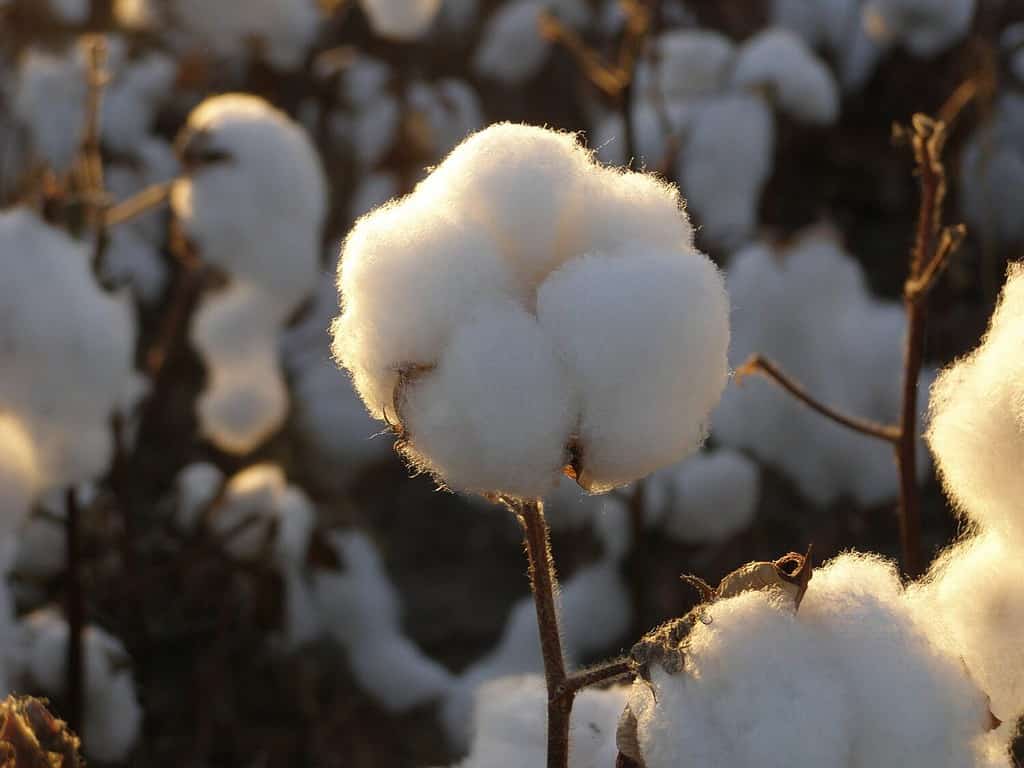
It should come as no surprise that cotton is one of the most valuable crops in Louisiana.
©walter javier godoy/Shutterstock.com
Cotton holds the number four position in our list of Louisiana’s top most valuable crops. A large majority, about 80%, grows near the Mississippi and Ouachita Rivers, as well as in an area known as the Macon Ridge. The other 20% is cultivated near the Red River, primarily in the central and northwest parts of the state.
This soft fiber comes from plants and is enclosed in a protective casing known as a boll.
In the northeastern section of Louisiana, cotton has been important for over a century. Although once grown statewide, it’s now largely concentrated in the northeast due to the region’s better suitability for cotton growth and the fact that other crops like rice and sugarcane are more popular in the southern areas.
For many northeastern communities, cotton farming is crucial to the local economy. And over the years, yields per acre have increased. For example, in the early ’50s, farmers harvested about 375 pounds per acre. That figure climbed to roughly 660 pounds per acre between 1997 and 2001. Some even manage to harvest more than 1,000 pounds per acre.
In terms of recent changes, the year 2022 saw significant growth in cotton acreage, with an 83% increase from the previous year, totaling 190,000 acres. However, each acre produced slightly less cotton, around 909 pounds, marking a decrease from the year before. Nevertheless, total production grew substantially by 64%, equating to 360,000 bales.
On the financial front, the value of Louisiana’s cotton crop (both upland and cottonseed) was just shy of $200 million in 2022.
6. Hay – $117,000,000
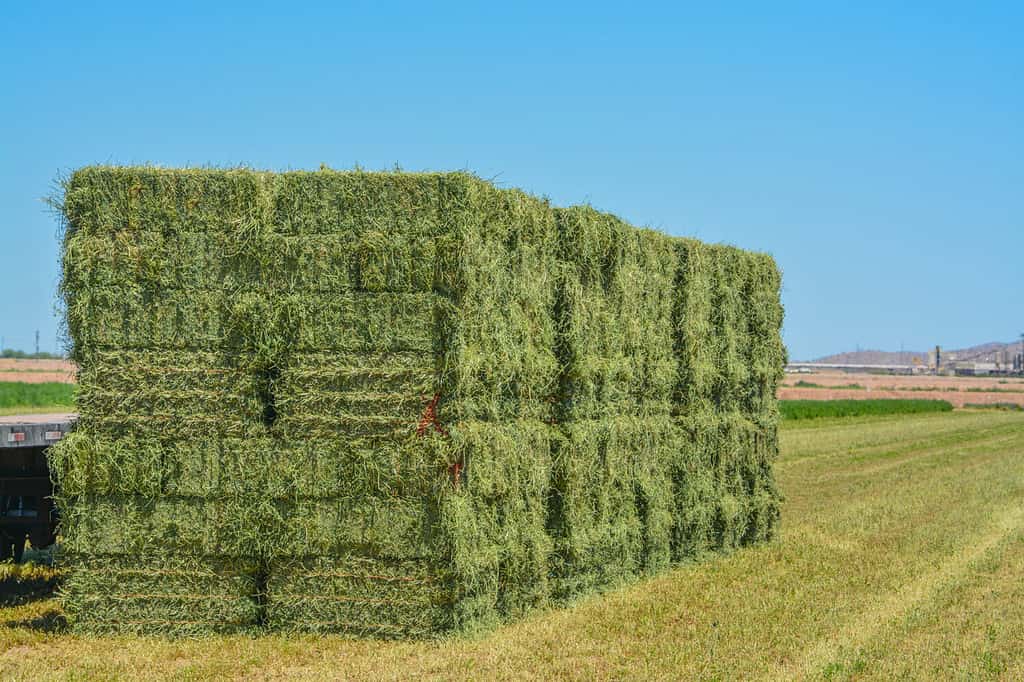
While alfalfa hay is not as popular in Louisiana, the state does grow Bermuda and other warm-season grasses.
©Norm Lane/Shutterstock.com
Hay thrives in Louisiana’s climate, which offers the ideal mix of abundant rainfall followed by hot, dry periods perfect for harvesting. While alfalfa is a key hay crop in many other states, it’s not as common in Louisiana.
Simply put, hay is dried grass or plants used mainly as food for various types of animals like cows, horses, and even smaller pets like rabbits and guinea pigs.
In Louisiana, the primary focus is on growing warm-season grasses for hay. Bermuda grass, a resilient warm-season grass, is particularly popular. This grass flourishes from spring to late fall and is great for both grazing animals and making hay.
As for some recent numbers, Louisiana saw a 5% increase in hay acreage in 2022, reaching 390,000 acres. However, the yield per acre was slightly less compared to the previous year, at 2.40 tons. This resulted in a total production of 936,000 tons, a 3% decrease from 2021.
When it comes to its economic impact, hay brought in $117 million for Louisiana in 2022.
Summary of Louisiana’s Top 6 Most Valuable Crops
| Rank | Crop | Value (2022) |
|---|---|---|
| 1. | Sugarcane | $928,118,000 (Estimated) |
| 2. | Soybeans | $773,432,000 |
| 3. | Corn | $491,768,000 |
| 4. | Rice | $472,798,000 |
| 5. | Cotton | $199,595,000 |
| 6. | Hay | $117,000,000 |
The photo featured at the top of this post is © walter javier godoy/Shutterstock.com
Thank you for reading! Have some feedback for us? Contact the AZ Animals editorial team.







